
Hurricane Harvey and Student Homelessness (Briefs 1 and 2)
Brief 1 of this two-part series examines the characteristics of students who became homeless due to Hurricane Harvey. Brief 2 explores the educational outcomes of these students.

Hurricane Harvey and Student Homelessness (Briefs 1 and 2)
Brief 1 of this two-part series examines the characteristics of students who became homeless due to Hurricane Harvey. Brief 2 explores the educational outcomes of these students.
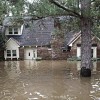
Rising flood insurance costs may be another blow to Houston’s affordability
Hurricane season is here, and with it comes a familiar feeling of dread in the Greater Houston area, particularly about floods. But more than five years after Hurricane Harvey, Houstonians may be less inclined to buy flood insurance because of cost increases that have begun to roll out in the last year, with the latest data from the Federal Emergency Management Agency showing that prices could go up by 75% in Harris County alone.
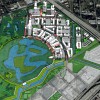
How a former landfill could help fight floods and reimagine a swath of southwest Houston
A proposal to transform a former landfill in southwest Houston into a mixed-use development with a flood control component recently caught the attention of statewide planners who recognized it for its contributions to resilience.

Federal report calls out civil rights inequities in Hurricane Harvey’s aftermath
In the wake of two historically devastating storms in 2017, financial aid from the Federal Emergency Management Agency and the U.S. Department of Housing and Urban Development contributed to an increase in wealth inequality.
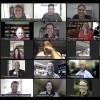
Water connects us, yet too often our region’s ongoing relationship with water presents itself as flooding that wreaks havoc and devastates all in its path. In the aftermath of Hurricane Harvey, many efforts have emerged to try to rebuild our relationship with water from one of harm to one of resilience.

Natural disasters are increasingly common each year, affecting infrastructure and contributing to economic, social, health, and psychological hardships. When Hurricane Harvey hit Houston in 2017, it quickly amassed $125 billion in damages, displacing over a million people and their homes. Along with the economic toll of a disaster event, mental health concerns carry a cost that is difficult to measure.

The Kinder Institute’s Urban Data Platform warehouses over 50 datasets related to Hurricane Harvey and its aftermath. These resources can help researchers, agencies and organizations work toward ways to prevent and withstand the worst effects of the storms to come.

Houston is still reckoning with the biggest lessons from Hurricane Harvey
When it hit five years ago this week, Hurricane Harvey was an unprecedented disaster: 68 people dead, 200,000 homes damaged or destroyed, a half-million cars wiped out, $125 billion in damage.

In ‘More City than Water,’ Houston tells its Hurricane Harvey story. Will we listen?
Flood survival stories are a Houston shibboleth, a test of membership. Make it through a devastating downpour, and you are one of us. And everyone who lived in the Houston area in August 2017 has a Hurricane Harvey story. For some, it was another entry in a collection of flood stories, depending on how long they lived here and where; for others, it was their first, a rude awakening to very real vulnerabilities.
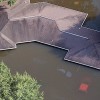
After Hurricane Harvey, flood insurance created windfalls and fault lines for the middle class
Friendswood, a close-knit suburb southeast of Houston that routinely makes lists for being the “best place to raise a family,” also serves as a case study for how flaws in the federal approach to flood insurance and disaster recovery aid resulted in fractured outcomes even among similarly situated middle-class neighbors after Hurricane Harvey.

If it hopes to overcome future Harveys, Houston needs to double down on resilience and planning
A new book serves as a guide for how cities can best learn from one another to design systems and build ways to endure the worst climate shocks to come. This includes Houston’s experience—both for what to expect from a changing climate and how to respond. Its authors say Houston has done several things right, but they also worry that future disasters could outpace these efforts.
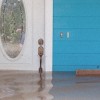
With new incentives, Harris County hopes to gain buy-in for buyouts
Climate change is propelling more extreme weather events, including more precipitation and flooding, which means the need for more strategies such as buyouts has never been more urgent. As a concept, buyouts are fairly straightforward: the government buys up properties to remove them out of harm’s way, reducing the risk of loss of life, the need for future flood repairs, insurance payouts and other costs.

Texas Flood Registry: Measuring the Long-Term Impacts of Major Storms
This webinar shares findings from the 2020 Texas Flood Registry Report, which provides an update on the health and housing impacts of Hurricane Harvey and other major storms.

A wider view: Where Houston stands as it recovers from Harvey and builds its resilience
What do trees, bike lanes, and billions in federal disaster aid have in common? They are some of the building blocks of Houston’s future—one that is safer, more equitable and better positioned to withstand future disasters. They’re also among the inventory of measures included in the Kinder Institute’s new Resilience and Recovery Tracker.

A new book, “In Too Deep” tells the story of Bayou Oaks, and its repetitive flooding, from the perspective of 36 mothers who are raising young children there. It follows the families across the course of more than a year, starting right after Hurricane Harvey flooded their homes, and tracking them across the recovery year and beyond as they work to restore their community for the third time in three years.
Rice University
Kraft Hall
6100 Main Street, Suite 305
Houston, TX 77005-1892